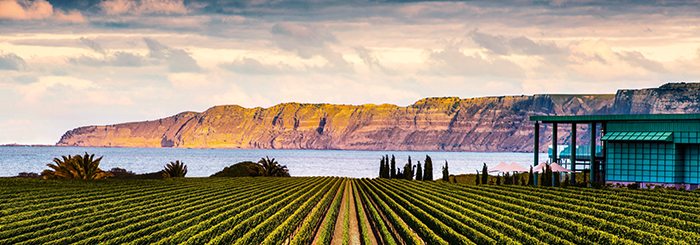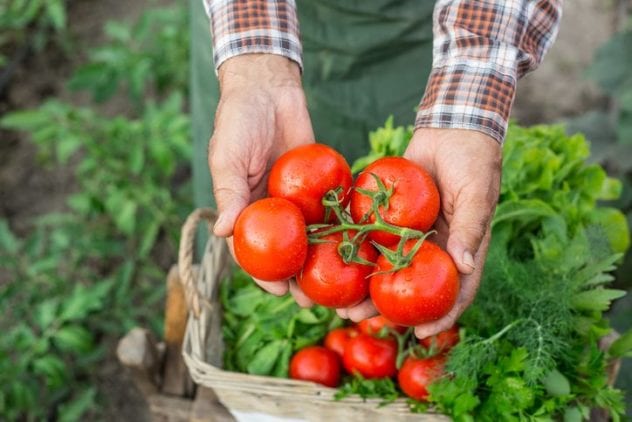As a group of lunching ladies at Clearview Estate rises to leave, proprietor Tim Turvey takes a moment out of our wine tasting session to say goodbye. “That’s a group of my ex-girlfriends,” he smiles, apologetically. “They invited my fiancée as well, but she already had plans.” Somehow this cosy snapshot seems quite normal for Hawke’s Bay – and indicative of its wholesome hospitality.
Named after Hawke Bay, a 100km semi-circular bay flanking the eastern boundary of the region, Hawke’s Bay was founded in 1858. At the time, the focus was on farming the southern plains below the Ngaruroro River – Napier itself was built on a peninsula, surrounded by lagoons. There was just one vineyard, Mission Estate, established in 1851 by French missionaries to produce communion wine.
Then on February 3, 1931, the area was hit by that infamous earthquake, measuring 7.9 on the Richter scale. Napier was levelled, and more than 250 people lost their lives. But as the smoke from the fire cleared, locals were met with an amazing sight: the sea bed of the lagoon had risen an incredible 2.7m, creating more than 40km2 of new, dry land. This “gift”, as it’s known locally, along with the Art Deco rebuild of Napier and Hastings, made the area more accessible, more desirable, and laid the foundations for the wine revolution to come.
Though admittedly, that revolution was some time in the coming. There are now three wine producing areas in Hawke’s Bay: Te Awanga, Gimblett Gravels and the Bridge Pa Triangle – but they were only established in the 1990s.
When Turvey bought his Te Awanga Clearview Estate near Cape Kidnappers in 1985, he was told it was too cold for growing grapes. “I was a bit of a hippy,” he admits. “I just wanted some land close to the sea so I could surf. The only thing growing here was an old olive tree.”
One day while Turvey was mowing the paddock around the olive tree he found an old sign in the long grass: “Vidal’s No. 2 Vineyard”. In around 1912, the land had belonged to Spaniard Anthony Joseph Vidal with vines suitable for fortified wine and sherry. Inspired, Turvey set about planting 2500 trees, including avocados, citrus and more olives, but predominantly vines. Clearview released its first red wine vintage in 1989, and established the award-winning restaurant in 1992.
“We’ve got 48 acres in Te Awanga,” says Turvey. “The clay soils and sea air make it a great climate for all sorts of varietals, including chardonnay, semillon and sauvignon gris.”
Perfect soil for grapes
Turvey also leases a section of land in Gimblett Gravels, to the west. This ancient river bed was once considered by locals to be useless for either grazing or growing. The council allowed a drag strip to be built there and leased land to a quarry.
When Stonecroft was established there in the early 1980s, it was the subject of ridicule, but founder Alan Limmer recognised the good drainage and latent fertility of the gravels was perfect for grapes. He acquired some syrah vines – a new variety to NZ – which had been imported for research and were going to be destroyed. They grew wonderfully in the dry but not too cool climate, and the first vintage released in 1989 achieved international acclaim. This helped Limmer fight a court battle to have the area zoned for viticulture, which he won in 1992.
“We’ve been here for 20 years,” says Chris Harrison of Beach House Wines, a boutique vineyard and homestay in Gimblett Gravels with a cellar door in Te Awanga. “I love chardonnay and Bordeaux-style reds, which this area is known for now. When we bought the land in 1996 we started a brewery to fund our wine-making venture. You can get a return from beer in six weeks, but with wine it’s at least seven years from planting.” The commitment has paid off for Harrison and his wife Jill, who have raised their children – as well as an award-winning vineyard that is Sustainable Winegrowing NZ accredited – on the land.
“Gimblett Gravels is similar to the French Appellations,” says Harrison. “It’s fertile, but not too fertile, which means the vines don’t over grow and you get rich, ripe fruit. The free-draining soil is also essential for good reds.” Harrison points out that you can be the most talented viticulturist or wine maker in the world, but the site is the most important thing. “There’s more to Hawke’s Bay than grapes,” Harrison insists. “There’s so much diversity in horticulture here, which is good for the sanity of the population. The sunshine makes me happy, but if there was nothing beyond the wine it would drive me mad.”
True local flavours
Indeed, Hawke’s Bay is set in a perfect triangle of farms, fields and sea, with fresh fish, free-range meat and locally grown fruit and vegetables abundant under the umbrella of a Tuscan microclimate. Te Awa vineyard, on the border between the Gimblett Gravels and Bridge Pa wine areas, is a great example of the breadth of what Hawke’s Bay has to offer. Surrounded by farmland, executive chef Stephen Tindall prioritises seasonal, local ingredients in all of his dishes. “Those carrots come from just over that fence,” he smiles, as he talks us through the degustation menu. Other delights include local asparagus, lamb, the wild fennel you can see growing along the paths and plenty of Hawke’s Bay citrus.
Good food, good weather and good wine inevitably attract good people, and Hawke’s Bay has characters in spades. There is of course the eccentric old guard, like our friend Turvey who allegedly won “wine personality of the year” so many times it had to be removed from the schedule of local awards. Nestled in the corner of Bridge Pa, just at the start of the local bike-wine trail, is Ash Ridge. Established in late 2013 by Chris and Sonya Wilcock, this new kid on the block is also home to a new personality in the making. Lauren Swift is just 26 years old, head winemaker at Ash Ridge and winner of the NZ Young Winemaker of the Year award 2015.
“I hated the vineyards, growing up in Marlborough,” Swift laughs. “Every year from the age of 13 I worked there in the summer, but it was just a job.” Then at 18, Swift left on her big OE, visiting many of the famous wine regions of Europe. “I began to realise wine could be interesting, that I needed to know more, and when I came home I got a job at a boutique French winery in Marlborough.” Ultimately, though, the diversity of wines available in Hawke’s Bay drew her in, and after studying locally, she got a summer job at Ash Ridge and managed to win an award with her first merlot.
Off the back of that Wilcock offered her the head winemaker role. “It was very intimidating,” admits Swift. “Not only am I 10 years younger than most people in the business, I’m one of the only women. I’ve just begun to feel validated in the last year. People drink my wines, like my wines and buy my wines. I’ve won them over.”
Swift has big plans for the industry she has grown to love. “I’m going to launch my own label, using Ash Ridge syrah but made in a more Northern Rhône style,” she says. “I’m also developing viogner. Hawke’s Bay is in a unique position with this variety – it could be really interesting here.” Lauren is also experimenting with wild fermentation and building her own yeast culture. A breeding ground for great wines, interesting people and exceptional food, Hawke’s Bay has come a long way from its drag-strip and sheep farming days, and in a very short time. Is it too much, too soon? Not at all – it only promises to get better.





